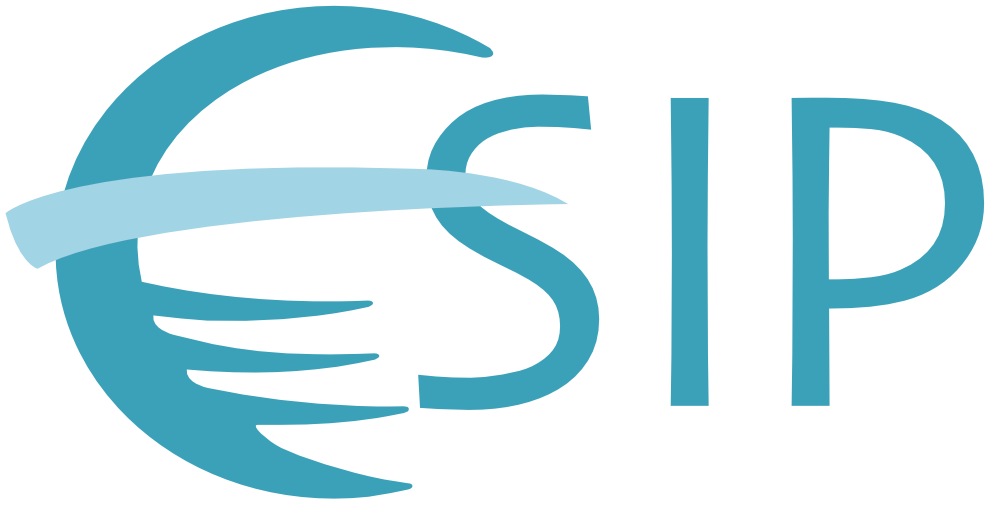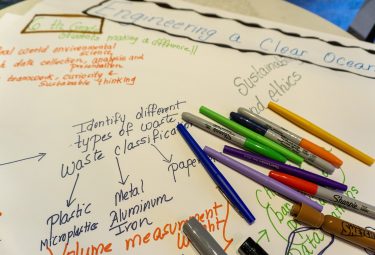Early bird rates are available for registration to the 2026 January ESIP Meeting. Register.
Meet 2025 Raskin Scholar Kate Thompson

Earth Science Information Partners (ESIP) has awarded the 2025 Robert G. Raskin Scholarship to Kate Thompson, a graduate student in the Department of Forest and Wildlife Ecology at the University of Wisconsin Madison. She has served as a data curator for EcoSIS, and will embark on a Fulbright Scholarship to Finland in fall of 2025 exploring spectroscopy, radioactive vegetation contamination, and machine learning.
The Raskin Scholarship is an annual award made by ESIP to a current graduate student in the Earth or computer sciences who has an interest in community evolution of Earth science data systems. The scholarship is named for longtime ESIP participant Robert G. Raskin, a pioneer in Earth science semantics, and seeks to promote collaboration, research support and exposure for talented students in the Earth or computer sciences.
This year’s award winner is Kate Thompson, a PhD candidate in the Townsend Lab in the Department of Forest and Wildlife Ecology at the University of Wisconsin-Madison. Thompson's selection highlights her exceptional research, commitment to open science, and dedication to applying scientific insights for societal benefit.

Using Hyperspectral Bioindicators for Environmental Monitoring
Thompson’s research explores the potential of hyperspectral imagery, also called spectroscopy, to monitor contaminant-induced stress responses in vegetation. The aim of her work is to identify spectroscopic signals of plant stress that are diagnostic of exposures to contaminants associated with nuclear power production before plants show visible symptoms of stress.
“We have these big buckets of physiological responses, like plants turning yellow when they are unhappy,” Thompson explains. “But, is the plant turning yellow because of drought, contaminants, or something else? There’s a lot of power in being able to answer that question without sending someone into the field to collect samples and do wet chemistry to find out. Hyperspectral approaches begin to make this possible.”
As hyperspectral imagery becomes more accessible through satellite and airborne instrumentation, Thompson's novel research offers a groundbreaking path for environmental monitoring. By leveraging existing vegetation as passive, low-cost bioindicators, her work could lead to new remote, high-frequency, non-destructive estimates of pollutants across landscapes. This capacity would significantly enhance researchers’ ability to detect accidental contaminant releases, and even delineate legacy contamination over large areas, ultimately leading to more effective environmental remediation and pollution mitigation efforts.
Thompson's research aims to:
- Quantify the physiological and chemical changes in plants experiencing contaminant-induced stress.
- Reliably differentiate between various contaminants.
- Parse interactions between contaminants and other environmental stressors (e.g., drought, nutrient deficiencies).
- Characterize type-specific stress responses and interactions across diverse types of vegetation and contaminants.
Her current projects include:
- Identifying bioindicators that differentiate between various types of metal toxicity and other stresses (chromium VI, copper, and copper + drought exposures) in tall fescue (a type of grass).
- Using leaf reflectance data to identify potential bioindicators of tritium exposure in loblolly pines.
A Passion for Actionable Science and Open Data
Thompson’s research connects sustainability, public health, and climate change mitigation. “I’m really interested in questions of policymaking and accountability,” she says. “For instance: nuclear power is promoted as an essential tool to decarbonize our economy. There are a lot of reasons for that, but also a lot of unresolved questions. How do we responsibly handle waste? What are the long-term consequences for ecosystems when some level of contamination is inevitable? What level of risk is publicly acceptable?”
Initially, Thompson was drawn to her field after working with the Natural Capital Project at the University of Minnesota, a collaborative effort to quantify the value of natural capital, develop tools to assess ecosystems, and provide scientific and economic insights to inform decision-making. She realized that to protect the environment we need better ways to quantify ecological processes at scale. She wanted to help make those data actionable, which requires more accurate and efficient monitoring methods. Thus, remote sensing naturally attracted her interest.
With time spent as a data curator for EcoSIS (Ecological Spectral Information System), an open-source database for spectral data, metadata, and plant trait measurements, Thompson also has firsthand experience with the importance of open and FAIR data standards. Her tasks included reviewing submitted datasets to maximize their utility for other researchers. She also helped with documenting metadata and mentoring some early career researchers to make their datasets the best they can be.
“Sharing data is powerful,” she says. “Hyperspectral data is still relatively difficult to collect, so spectral data that are paired with quantified vegetative traits are really valuable. Making sure there is a floor to the data quality makes the data more useful for other scientific questions and encourages protocol standardization. It’s also been really rewarding to work with such a collaborative and engaged community. There are a lot of fascinating applications in different disciplines and it’s been so cool to see creative uses for the technology.”
Leadership in Research and What’s Next
Thompson has already demonstrated exceptional creativity, leadership, and scientific aptitude. She is an excellent educator, a skilled data curator, and is recognized for her dedication to seeking solutions for society’s greatest challenges. Her mentors state that her work integrating ecophysiology, remote sensing, and machine learning is sure to break new ground in differentiating between drought and contamination stress, an increasingly critical problem.
Next on the horizon, Thompson was recently awarded a Fulbright Finland Doctoral Award. She will work with Dr. Ilkka Pölönen who leads the Spectral Imaging Laboratory at the University of Jyväskylä to assess how exposure to tritium – a radioactive isotope of hydrogen – impacts loblolly pines.
As this year’s Raskin Award winner, Thompson will be formally recognized at the ESIP Meeting in July, where she will present about her work during a plenary session and awards ceremony. Please join us in congratulating her on this well-deserved award!



